Slack vs Zoom
June 05, 2023 | Author: Adam Levine
49

Slack brings all your communication together in one place. It's real-time messaging, archiving and search for modern teams. Create open channels for the projects, groups and topics that the whole team shares. Slack searches whole conversations, not just individual messages, so you can find what you’re looking for no matter who said what or when they said it.
See also:
Top 10 Visual Collaboration software
Top 10 Visual Collaboration software
Slack and Zoom are two popular communication and collaboration platforms, but they serve different purposes and have distinct features. Slack is primarily a messaging and team collaboration tool that enables real-time communication through channels and direct messaging. It offers a rich set of features for file sharing, integrations with other apps, and project management, making it well-suited for team collaboration and asynchronous communication.
On the other hand, Zoom is a video conferencing and online meeting platform that focuses on real-time audio and video communication. It provides high-quality video conferencing capabilities, screen sharing, chat functionality, and recording options. Zoom is commonly used for remote meetings, webinars, and virtual conferences, offering features like breakout rooms and whiteboarding to enhance collaboration during live sessions.
See also: Top 10 Visual Collaboration software
On the other hand, Zoom is a video conferencing and online meeting platform that focuses on real-time audio and video communication. It provides high-quality video conferencing capabilities, screen sharing, chat functionality, and recording options. Zoom is commonly used for remote meetings, webinars, and virtual conferences, offering features like breakout rooms and whiteboarding to enhance collaboration during live sessions.
See also: Top 10 Visual Collaboration software
Slack vs Zoom in our news:
2024. Zoom unveils all-in-one AI work platform for more than just video conferencing
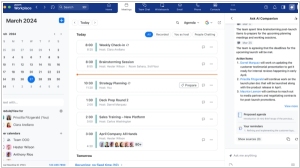
The unveiling of Zoom Workplace by a leading video conferencing company introduces an innovative "AI-powered collaborative platform" integrating its AI virtual assistant alongside a suite of novel features aimed at enhancing team productivity. Leveraging its existing AI Companion, Zoom Workplace streamlines meeting organization and summarization tasks, empowering users with its Ask AI Companion function to effectively prepare for and review meetings by aggregating and analyzing data from various Zoom applications such as Meetings, Mail, Team Chat, Notes, and Docs. Notably, the platform seamlessly integrates with third-party applications like Microsoft 365 and Google Workspace, further broadening its functionality and utility for users.
2024. Zoom debuts its app for Vision Pro, featuring digital personas, 3D files and more

Zoom has unveiled its visionOS app designed specifically for Apple's Vision Pro. This innovative application introduces various features including "persona" support, enabling users to utilize a digital avatar during calls, and 3D object sharing through the "Team Chat" feature, among others. Apple's Persona feature captures a user's face scan, providing a spatial representation of themselves within Vision Pro, and Zoom's dedicated app seamlessly incorporates this, allowing participants to observe facial and hand movements during meetings. Additionally, Zoom on Vision Pro leverages the headset's augmented reality (AR) technology, presenting video calls as floating windows that blend seamlessly with the user's physical space. The visionOS apps' three-dimensional interface facilitates the sharing of 3D files, bringing objects to life in the user's environment. While 3D object sharing will not be available at the initial launch, Zoom has announced plans to roll out this feature later in the spring.
2023. Zoom launches online document editor Zoom Docs
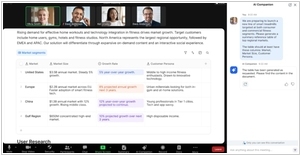
Zoom has unveiled a new product called Zoom Docs, which is a flexible and modular AI-powered workspace designed specifically to tackle the challenges of today's hybrid work environment. This innovative tool enables teams to not only create documents but also develop wikis and manage workflows seamlessly, all within the Zoom platform. Zoom Docs offers modularity, user-friendly interface, and adaptability. It seamlessly integrates with both Zoom and third-party applications, simplifying the process for teams and individuals to collaborate, create, manage projects, and stay organized. Moreover, Zoom Docs incorporates Zoom AI, allowing users to populate documents with content from Zoom Meetings, facilitating informed and efficient content creation. Additionally, the built-in Zoom AI Companion assists in generating compelling plans and projects based on previous discussions, enhancing productivity and creativity.
2023. Zoom launches an asynchronous video tool for the meeting-averse
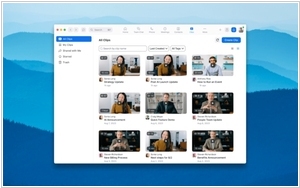
Zoom has introduced a new asynchronous video tool called Zoom Clips. It enables users to record, edit, and share video clips without the need for a live meeting. Currently in public beta, Zoom Clips offers a dedicated content library where users can efficiently manage, share, rename, search for, download, or delete their clips. Accessible through the desktop Zoom app, the Zoom web portal, as well as the Mac menu bar and Windows system tray, Clips allows users to capture both screen and webcam feeds, optionally with a virtual background, or specific portions of their desktop. After recording, users can enhance their clips by adding a title, description, and tags, trimming unwanted sections, and sharing via email through Zoom's web portal. Additionally, users can control access to the clip, specifying whether it is viewable by anyone with the link or only within their organization, and they can monitor comments and metrics such as completion rate and views from the same portal.
2023. Zoom partners with Anthropic to bring Claude chatbot to Zoom products
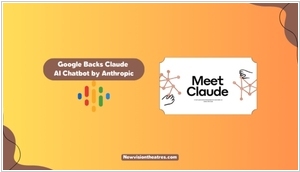
With the increasing prominence of generative AI, Zoom has recognized the importance of partnering with Language Model (LLM) companies to navigate the evolving AI landscape. In line with this strategy, Zoom has recently announced its collaboration with Anthropic, a partnership that will involve leveraging Anthropic's Claude chatbot on the Zoom platform, initially focusing on the Zoom Contact Center. The objective of this partnership is to enhance customer support by providing more accurate responses while minimizing instances where the models generate fictional answers in the absence of the correct response. Zoom plans to continue collaborating with the Anthropic model and gain a deeper understanding of its workings. Eventually, the intention is to incorporate this technology into other Zoom products. It is important to note that there is currently no specific timeline for the introduction of Anthropic-based functionality to the market. However, Zoom remains committed to ongoing development in this area.
2023. Zoom acquires employee communications platform Workvivo
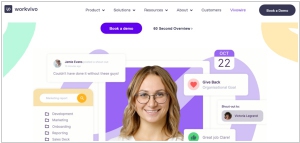
Zoom has announced its intention to purchase Workvivo, an Irish startup that has been operating for six years with a focus on enhancing internal communication and culture within businesses. Unlike Zoom and other similar communication tools, Workvivo places a greater emphasis on asynchronous communication rather than real-time communication. Its platform is designed to promote employee engagement on a broader level, offering features such as an activity feed, people directory, surveys, and a channel for important company announcements, similar to a modern intranet. Workvivo has gained a notable customer base since its establishment in Cork in 2017, with companies such as Amazon, RyanAir, and Bupa among its clients.
2023. Zoom announces AI features that act as your personal assistant
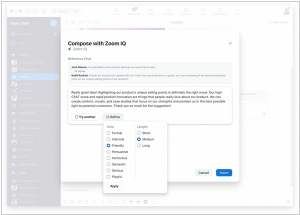
Video conferencing provider Zoom announced new additions to its AI-powered tool Zoom IQ. The new features leverage OpenAI's Large Language Model, or LLM, to summarize meetings, generate recaps, and draft chat and email responses. On the heels of announcements from Microsoft, Google, and Slack, Zoom is the latest major productivity tool to get the AI treatment. Zoom IQ already uses AI to give users meeting information through chapters, highlights from recordings, and action items. But it is taking it a step further by integrating OpenAI's powerful generative AI model. If you're late to a meeting, Zoom IQ can summarize in real time what you've missed and ask questions for you. Using text prompts, it can generate brainstorms using Zoom's whiteboard tool.
2023. Zoom is adding new features to compete with Slack, Calendly, Google and Microsoft
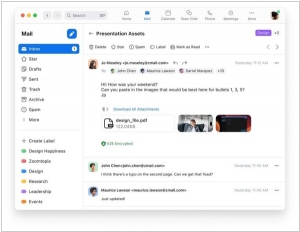
Zoom is expanding its offerings to compete with a range of companies, including Slack, Calendly, Google, and Microsoft, by introducing new features such as AI-powered meeting summaries, prompt-based email responses, and whiteboard generation, in addition to video "Huddles" and a meeting scheduler. Zoom aims to encourage users to shift more of their work tasks to its platform, and as such, it is making its email and calendar clients available to everyone. The company had been testing these tools since last year as part of a broader push beyond meetings. Furthermore, Zoom is offering hosted email and calendar services with end-to-end encryption protection and custom domains for paid users, which could serve as an alternative to Microsoft Exchange and Google Workspace for businesses.
2022. Slack adds persistent information layer to channels called Canvas
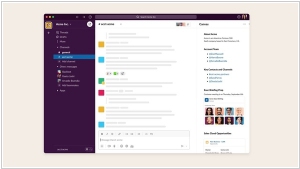
Slack has achieved considerable success in the enterprise realm by offering various communication options and seamless integration with common enterprise applications. However, until now, Slack has lacked a persistent way to share project-related information. While users could create channels to narrow down content and share documents, links, and other materials, finding them again required searching or extensive scrolling. Acknowledging this limitation, Slack has taken a step forward by combining the collaborative tooling of Quip with Slack's communication capabilities, resulting in a new tool called Canvas. Positioned alongside a channel's conversation stream, Canvas grants users access to a range of information, including data and charts, text, tasks, internal and external links, training videos, and more. This integration allows for a seamless experience where project-related information can be easily shared and accessed within the Slack platform.
2022. Slack gains new automation features, including conditional logic for workflows
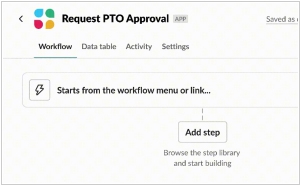
Announcing a significant update, Slack has introduced new automation features aimed at enhancing the shareability and discoverability of workflows. Building upon the existing Workflow Builder tool launched in 2019, these latest capabilities enable users to easily send workflows to other Slack users and utilize "if-then" statements to create more advanced flows. Slack's increased focus on automation aligns with the growing popularity of no-code development tools, which empower users to build apps and pipelines without requiring programming expertise. According to a survey conducted by 451 Research and FileMaker, nearly 60% of all custom apps, including automations, are now developed outside of the IT department. Furthermore, the survey revealed that 30% of these apps are created by employees with limited or no technical development skills. This trend emphasizes the importance of providing accessible automation solutions to a broader range of users.




